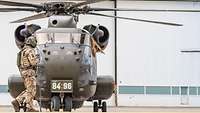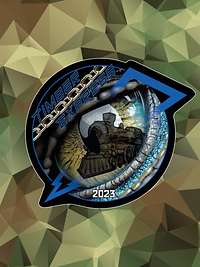Timber Express – A multi-link gateway acts as translator for data links
Timber Express – A multi-link gateway acts as translator for data links
- Date:
- Place:
- Schleswig-Holstein
- Reading time:
- 3 MIN
In military operations, seamless communication between different units and platforms is of vital importance. A “multi-link gateway” for tactical data links is a technology concept that meets exactly this challenge. It enables the exchange of information between different data links and military domains such as land, air, sea, space, and cyberspace to ensure effective networking of armed forces.
Challenges in networked operational environments
Today, modern military employments are often carried out in complex and networked operational environments. Cooperation and coordination between different armed forces and domains pose a major challenge. A multi-link gateway resolves this issue by acting as a mediator between the different data links, or message standards. It enables the exchange of information across different platforms and different networks.
How a multi-link gateway works
A multi-link gateway is a system that connects data links with one another. It acts as a kind of “translator” and ensures that information generated in one data link standard is transferred into another standard and can thus be understood. This works in a manner similar to a smartphone: One user communicates via WhatsApp and another user via Facebook Messenger. The two on their own could not communicate with one another. However, an app installed on their smartphones as an interface enables them to forward messages and data to one another. In this way, a multi-link gateway ensures smooth and seamless communications between the armed forces in different domains by means of different military data links.
Benefits of a multi-link gateway
In modern military operations, employments are often multinational and require cooperation of different domains, such as air support for ground forces or naval employments in connection with cyber operations. A multi-link gateway enables the integration of these different domains by connecting their communication systems with one another. This facilitates and enhances coordination in the armed forces’ course of action, and efficiency and effectiveness are significantly improved. Using a multi-link gateway offers numerous benefits. Effective networking of the armed forces increases situational awareness since information can be exchanged in a quick and precise manner. This allows faster decision-making and a more precise response to complex threats. Moreover, a gateway facilitates cooperation in multinational military operations since information can be exchanged in a seamless manner between the partners involved.
Digital hazards to digital communication
The security of a multi-link gateway has top priority. It must be protected against cyber attacks in order to ensure the integrity and confidentiality of the information transmitted. For this reason, the gateway intended for employments is equipped with rugged security measures and cyber resilience strategies in order to counter threats and ensure reliable communication.
CH-53 as a carrier for a multi-link gateway at TREX23
During TIMBER EXPRESS 2023, a CH-53 helicopter of the Bundeswehr Technical Centre will act as a “host” platform for the “translator” between the different tactical data links. The helicopter has been modified and fitted with extensive equipment specially for the exercise in order to be able to receive the data transmitted by all TREX23 participants. This is the first time that this principle is tested in an exercise environment.





